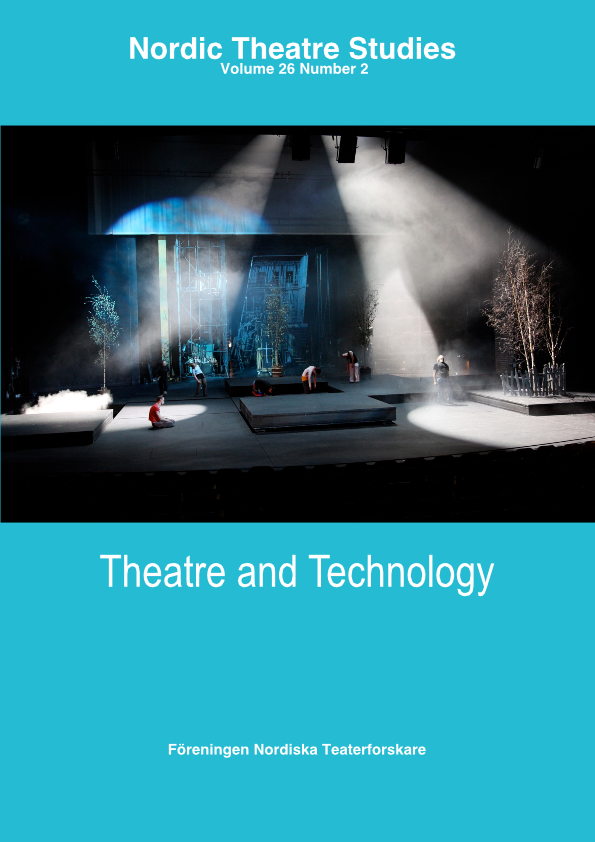The Spirit of Fluxus as a Nomadic Art Movement
DOI:
https://doi.org/10.7146/nts.v26i2.24312Keywords:
Maciunas, Fluxus, nomadism, Braidotti, Deleuze, Ono, BeuysAbstract
Fluxus was the brain-child of a Lithuanian-born artist named George Maciunas whose family fled to Germany in the Second World War, where they eventually became displaced persons and later emigrated to the USA. Maciunas studied art and architecture in Pittsburgh and New York before working as an architect and graphic artist and founded the Fluxus movement at the beginning of the 1960s. During his student years, he became fascinated by nomadic art in Asia and Eastern Europe that would later influence his life’s work. This essay considers the relationship between his interest in nomadism and the nature of the Fluxus movement that spread across the world, breaking down barriers between art and life, privileging concrete and conceptual art, and staging unusual events. It applies Braidotti’s notion of the nomadic subject to Maciunas’ encouragement of radical styles of performance art, such as Yoko Ono’s minimalist conceptual work and Joseph Beuys’s Tatar-influenced use of fat and felt.References
Roslyn Bernstein and Shael Shapiro, Illegal Living, Jonas Mekas Foundation, Vilnius 2010.
Rosi Braidotti, Nomadic Subjects: Embodiment and Sex- ual Difference in Contemporary Feminist Theory, Columbia University Press, New York 1994 [Second Edition 2011].
Gilles Deleuze and Félix Guattari, Nomadology: The War Machine, Semiotext(e), New York 1986.
Volker Harlan, Rainer Rappmann, Peter Schata, Soziale Plastik: Materialien zu Joseph Beuys, Achberger Verlag, Achenberg 1984.
Melanie Hedlund, Gilbert Silverman, Jon Hendricks, Fluxus etc. Addenda 1, Inc. &, New York 1983.
Julie Henault, “From America to Lithuania: The For- tunes of the Development of the Fluxus Movement in a Post-Communist Country”, maitrise, 2005.
Thomas Kellein, The Dream of Fluxus: George Maciunas: An Artist’s Biography, Edition Hansjörg Mayer, London and Bangkok 2007.
Liutauras Psibilskis, Jonas Mekas / The Fluxus Wall, Cen- tre for Fine Arts, Brussels 2013.
Carolee Schneeman, Meat Joy in Electronic Arts Intermix, http://www.eai.org/title.htm?id=14751
Mike Sell, Avant-Garde Performance and the Limits of Criticism: Approaching the Living Theatre, Happenings/Fluxus and the Black Arts Movement, University of Michigan Press, Michigan 2005.
Owen Smith, “Developing a Fluxable Forum: Early Performance and Publishing” in The Fluxus Reader, Ken Friedman, ed., Academy Editions, Chicester, West Sussex 1998.
Harry Stendhal, The Avant Garde: From Futurism to Fluxus, Jonas Mekas Visual Arts Center, Vilnius 2007.
Caroline Tisdall, Art into Society, Society into Art, ICA, London 1974.
Emmett Williams, Ann Noel, eds., Mr. Fluxus. A Collective Portrait of George Maciunas 1931-1978, Thames and Hudson, London 1997
Downloads
Published
How to Cite
Issue
Section
License
The copyright belongs to the authors and Nordic Theatre Studies. Users can use, reuse and build upon the material published in the journal but only for non-commercial purposes. Users are allowed to link to the files, download the files, distribute the files on a local network (preferably by links), upload the files to local repositories if their institutions require them to do so, but not republish the files without proper agreements with the journal and the author.

